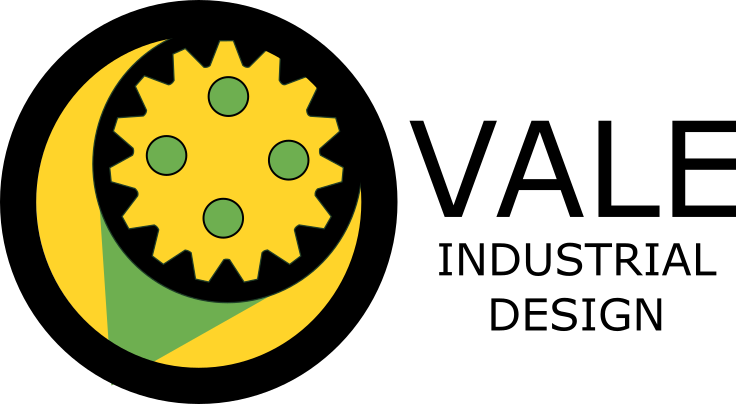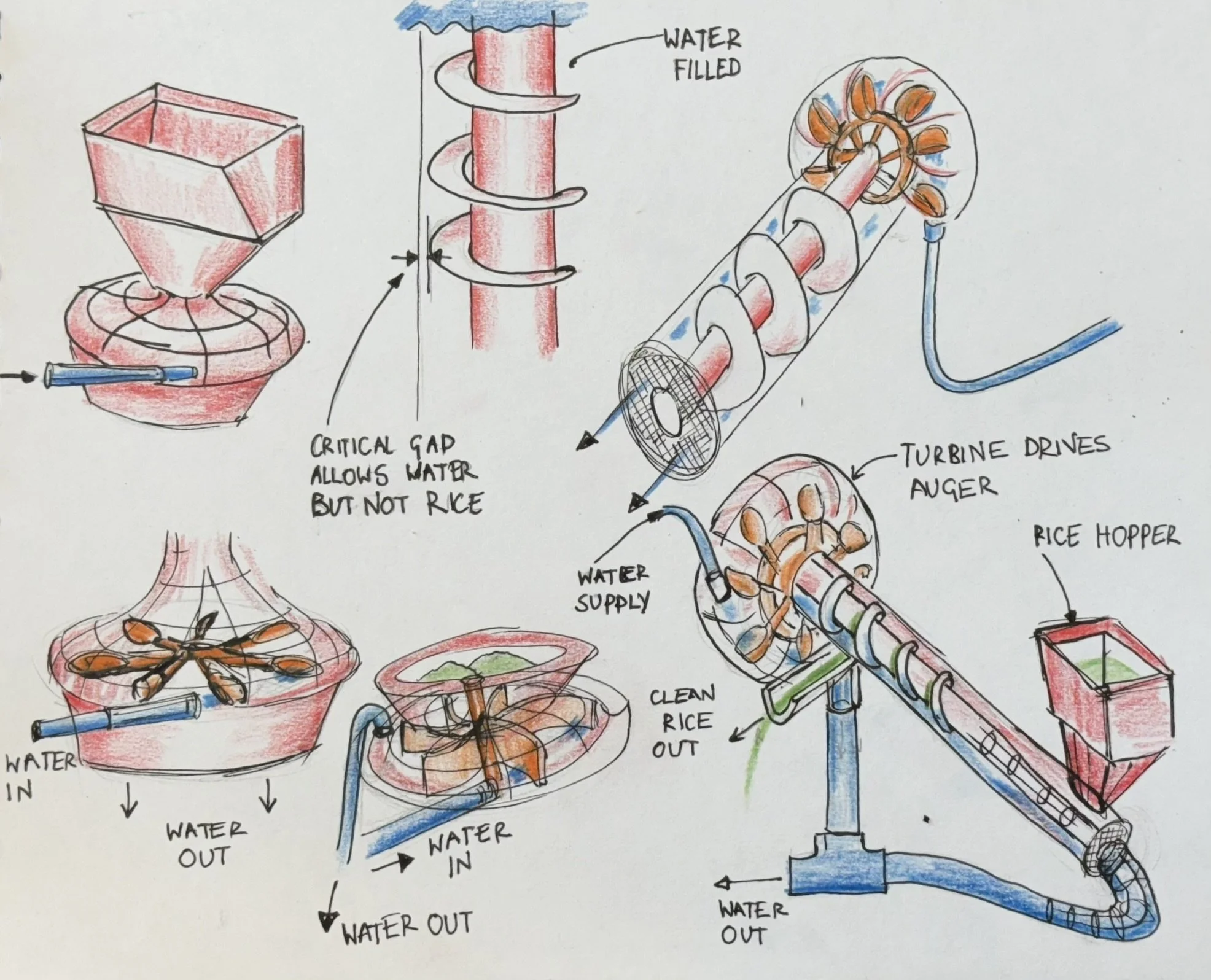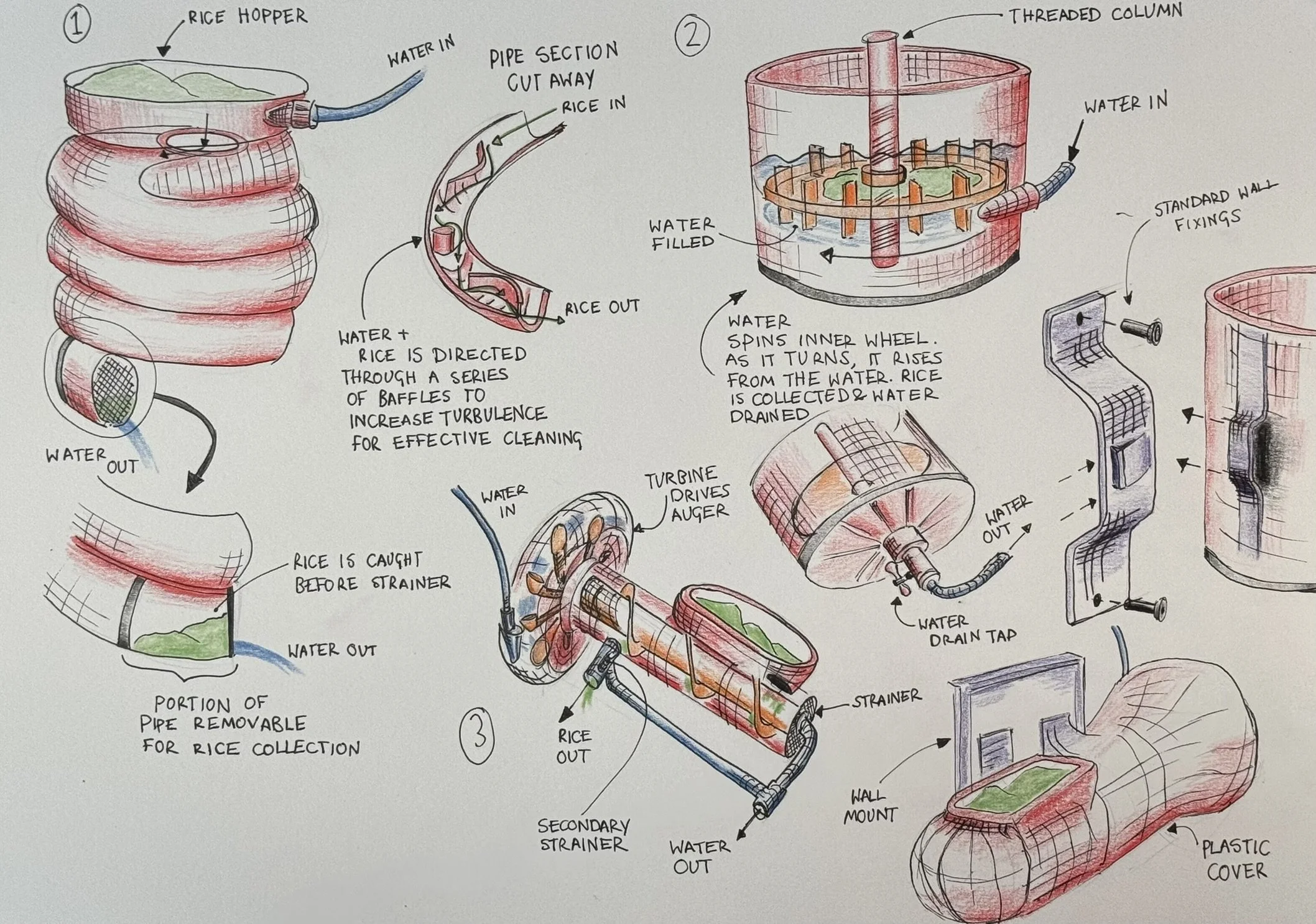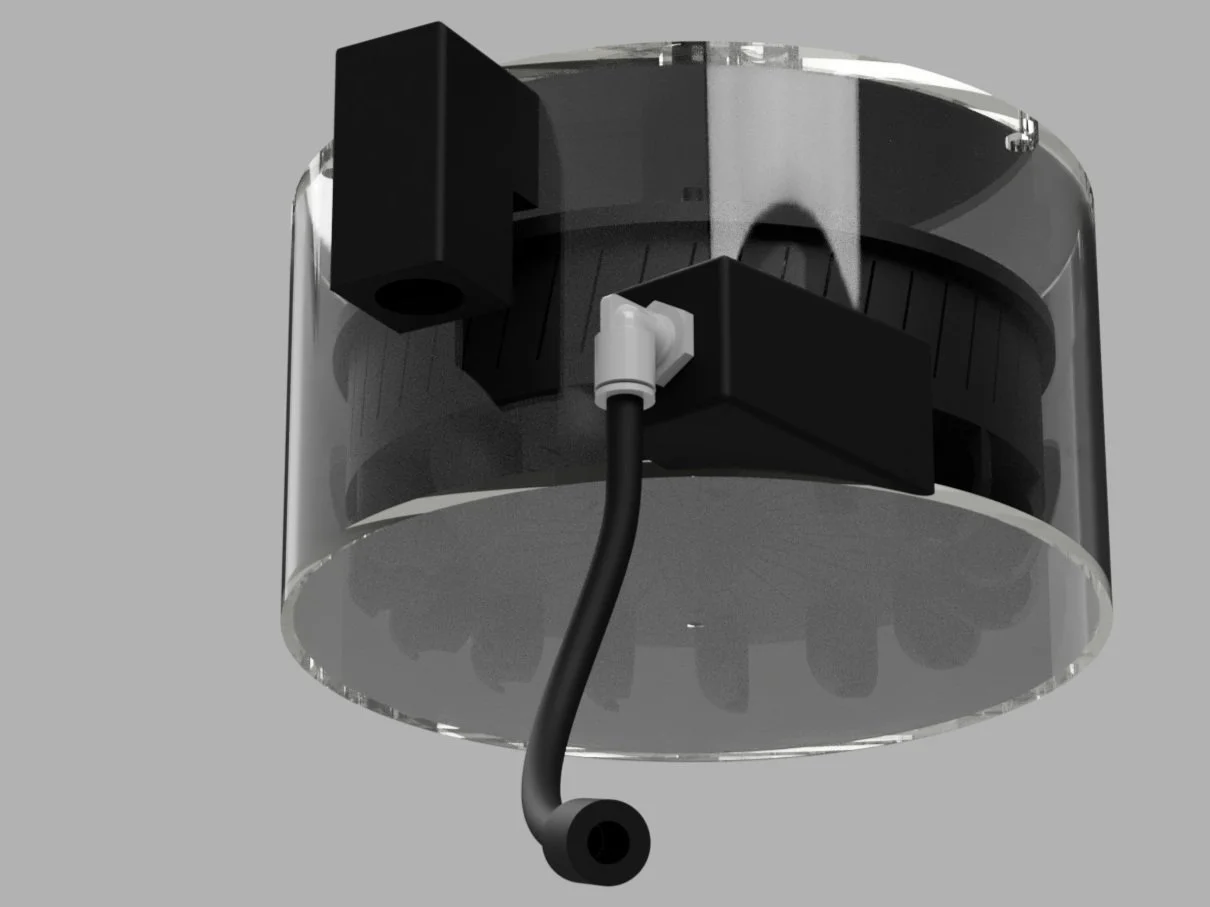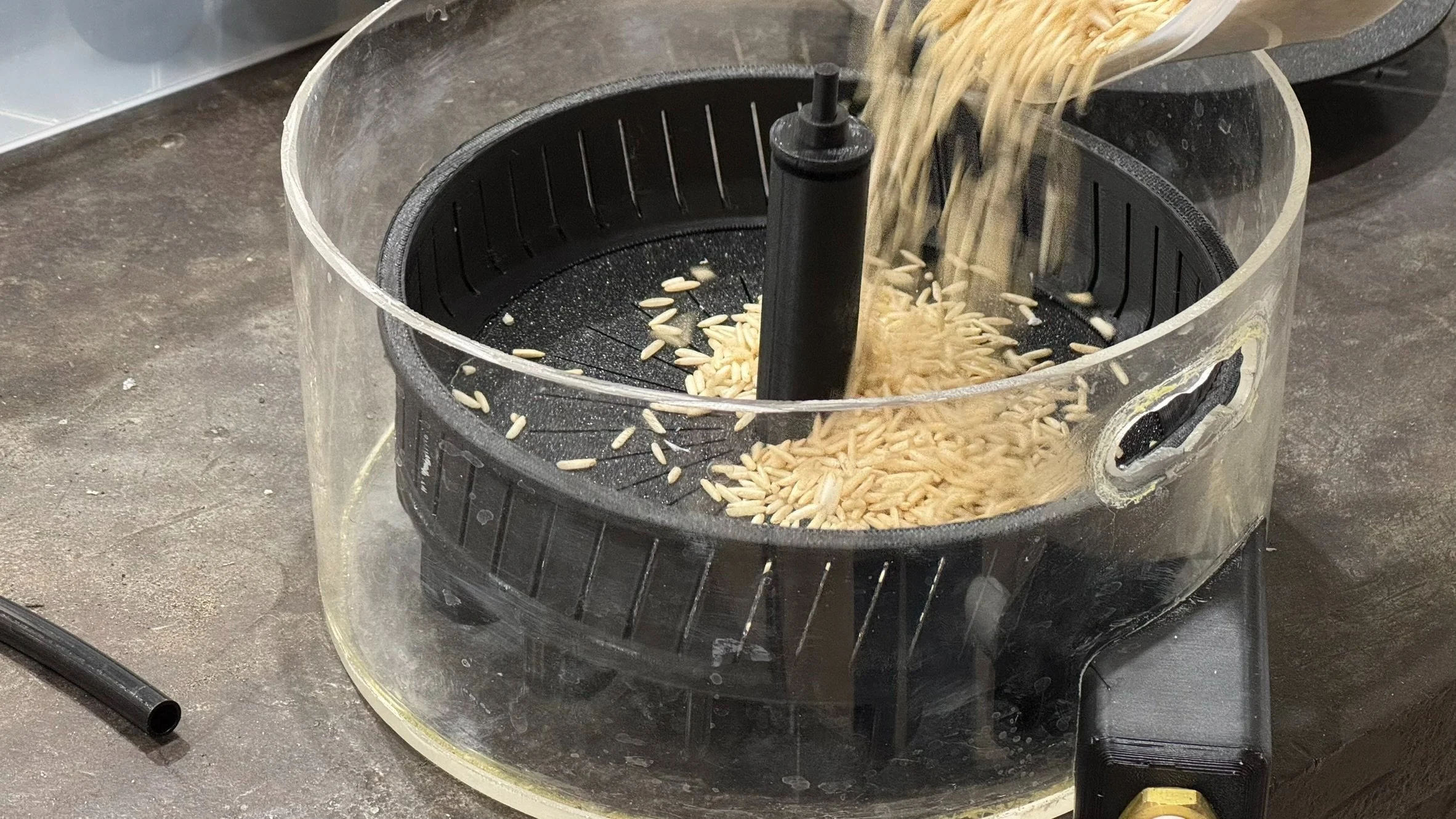Rice Starch Removal Device
The customer was looking for a product solution to automate the process of hand-washing uncooked rice grains in the consumer homeware sector. This was a novel product with some crucial requirements, making it suitable for the home environment.
Customer Brief and Specification
100% powered through domestic water supply
No electrical components
Maximum 5kg rice through the system at once
Prototype made with off the shelf parts, and 3D printed parts
Must be wall mounted using traditional fixings
Concept Visualization
Abstract ideas were explored through this concept drawing phase. The key requirements kept in mind the whole time. Considerations and design challenges that came about during this stage were:
Using water from a single supply as both the power fluid and washing agent
A way of removing the cleaned rice from the container post washing
Separating the rice and water. Removing the possibility of the grain being swept into the outlet
Concept Selection and 3D Modelling
Inspired by the simplicity of household salad spinners, design 2 was chosen to develop further.
Basic model drafted
Adaptations made from the original concept, such as:
Moving the water outlet to the top of the container, allowing a tabletop based unit
Discarding the idea of a threaded axle due to overcomplication
Model optimized for 3D printing and print bed size
Alignment with “off the shelf part” availability for the perspex container
Proof of Concept (PoC) Build
Prototype build commenced
Revisions made to CAD model based off first build performance. Encountered issues were:
Base slots and side slots were too large, resulting in rice disappearing through the outlet
Concentricity misalignment caused uneven rotation and part interference
No constraint on the vertical movement of the tray and central axis
Final design confirmed
Slot size reduced
3D printed concentricity jigs developed to ensure proper alignment of rotational parts
Bushing developed to account for axial and concentric misalignment. A part which can easily be replaced with minimal effort.
Further Development
Support for this project is ongoing. The next phase of development will centre around taking the proven mechanical method, and improving the design around this core feature. This will include:
Universal inlet and outlet port adapters for fitment to household taps and drains
Increased size for greater rice capacity
Wall mounting and bracketry
Monitoring of the cleaning effectiveness through outlet water colour recognition
